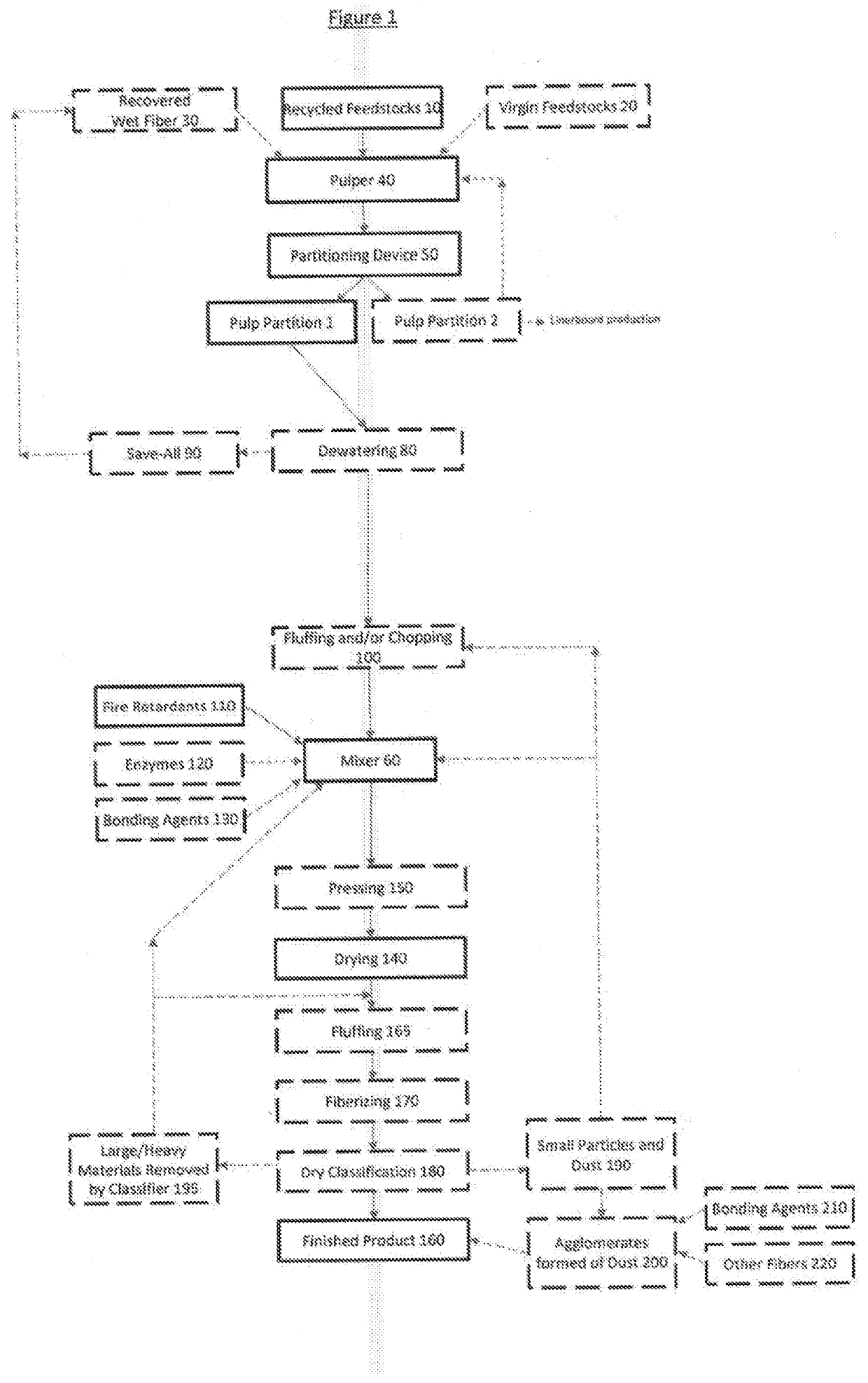Method of making fire retardant materials and related products
a technology of fire retardant materials and related products, applied in the field of making fire retardant materials, can solve the problems of limited application, limited adoption limited use of cellulose insulation as an alternative to fiberglass insulation, etc., to achieve the effect of reducing the inclusion of dus
- Summary
- Abstract
- Description
- Claims
- Application Information
AI Technical Summary
Benefits of technology
Problems solved by technology
Method used
Image
Examples
Embodiment Construction
[0023]While the follow description is directed to the embodiment of the invention wherein an organic cellulosic insulation is made, it is to be understood that the invention is not limited thereto. Instead, the present invention provides a method to produce a cellulose-based insulation having adequate fire retardancy using one or more recycled cellulose-based feedstock material in a cost-effective way. Additionally, the present invention provides for the fabrication of such a product while reducing the inclusion of dust material in the finished product. The steps of the method as described may be done in different orders without deviating from the scope of the invention including, but not limited to, the order in which components are added to a mixer.
[0024]Referring generally to FIG. 1, a cellulose insulation of the present invention is created when cellulose-based feedstock material that may otherwise be waste material, referred to herein as recycled feedstock material 10, and / or o...
PUM
| Property | Measurement | Unit |
|---|---|---|
| residual | aaaaa | aaaaa |
| thickness | aaaaa | aaaaa |
| density | aaaaa | aaaaa |
Abstract
Description
Claims
Application Information
 Login to View More
Login to View More - R&D
- Intellectual Property
- Life Sciences
- Materials
- Tech Scout
- Unparalleled Data Quality
- Higher Quality Content
- 60% Fewer Hallucinations
Browse by: Latest US Patents, China's latest patents, Technical Efficacy Thesaurus, Application Domain, Technology Topic, Popular Technical Reports.
© 2025 PatSnap. All rights reserved.Legal|Privacy policy|Modern Slavery Act Transparency Statement|Sitemap|About US| Contact US: help@patsnap.com

